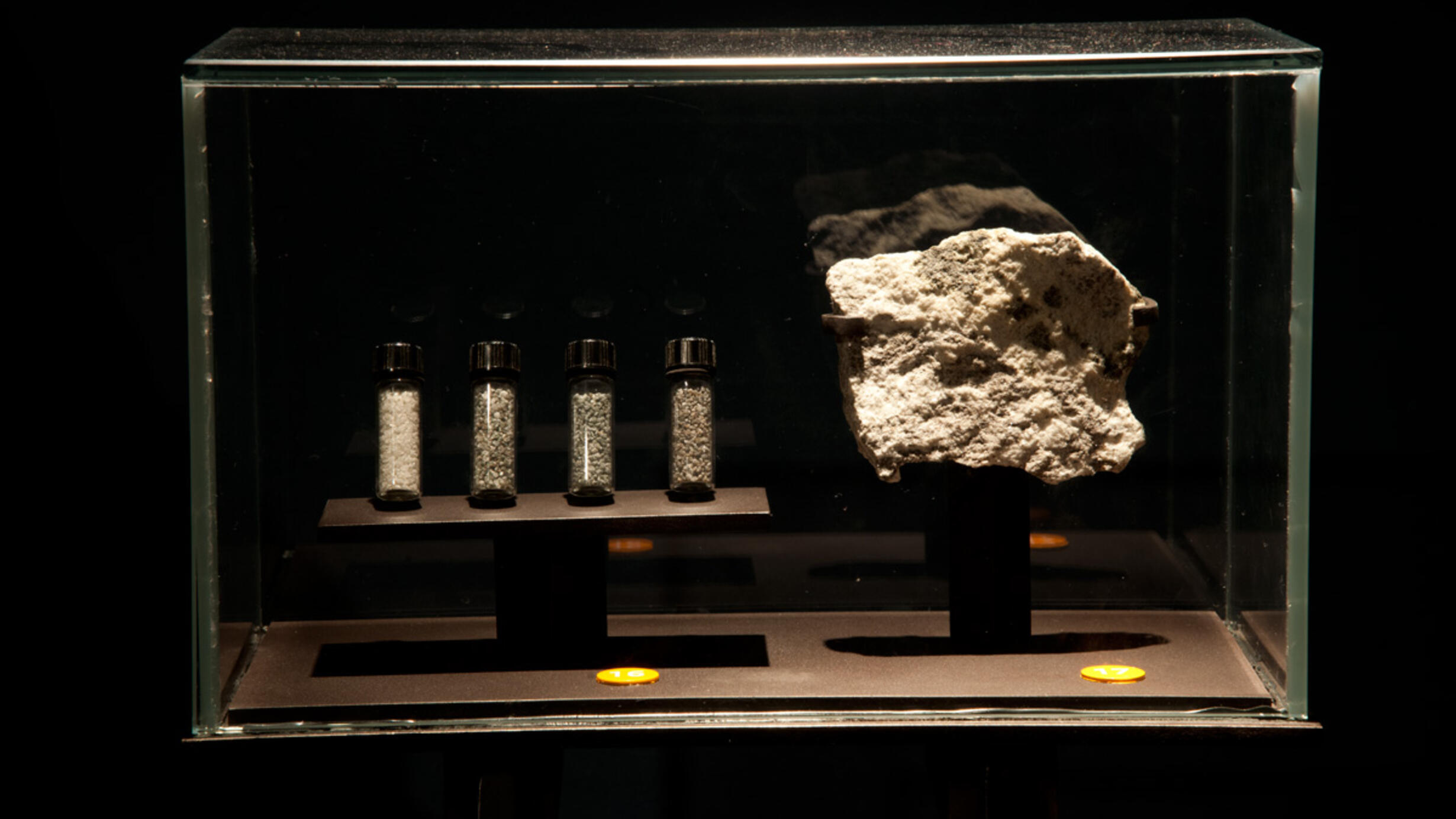Dating rocks by trails of destruction
Part of Hall of Planet Earth.
Part of Hall of Planet Earth.

This 1.85-billion-year-old gneiss and the one-million-year-old granite vein cutting through it were dated by counting the number of fission tracks in the apatite (calcium phosphate) crystals contained in each rock. Fission tracks are microscopic scars left behind when the radioactive element uranium spontaneously splits into two fragments. Since the rate of the splitting, or fission, is known, the age of the apatite crystal can be determined by counting the tracks within it.
Donated by Dr. Peter Zeitler, Lehigh University, Bethlehem, Pennsylvania